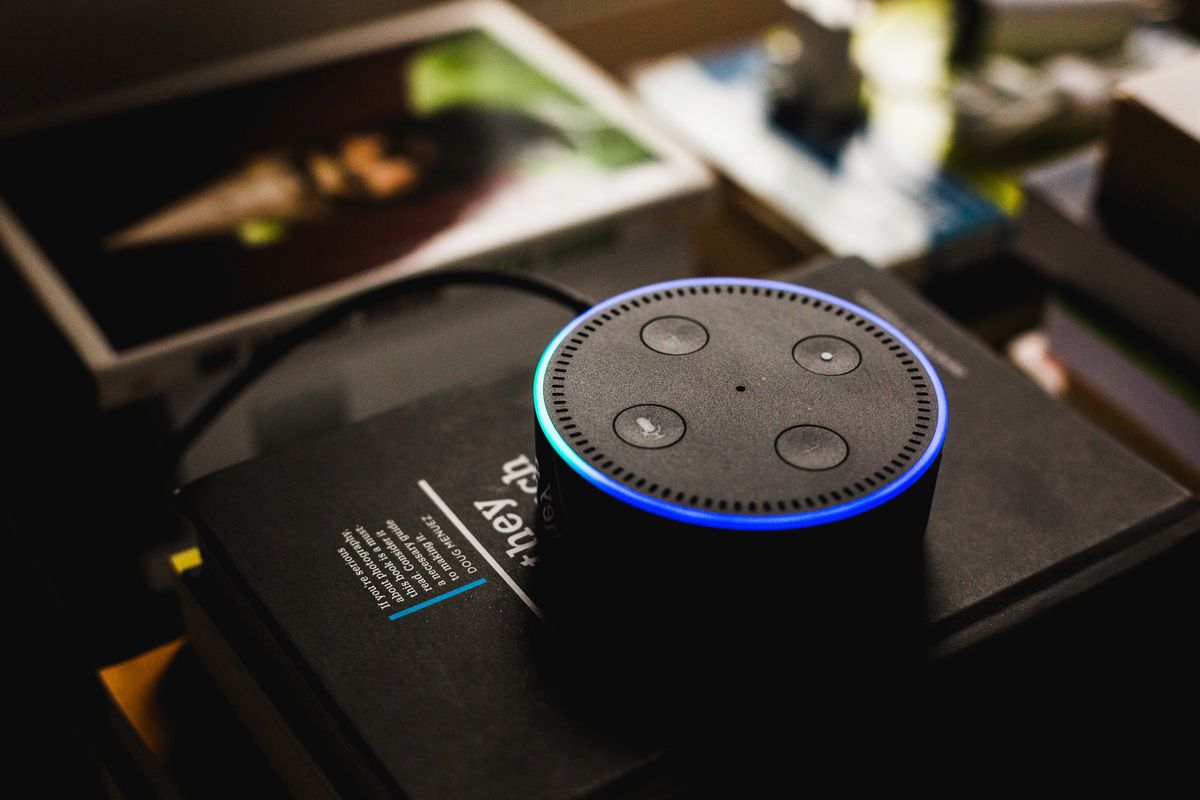The Fast & Easy Guide to Designing a Voice Assistant Personality

When developing a voice assistant, one of the most important things to remember is to give it a personality. Failure to do so can make it feel cold and robotic, which is hardly the time of presence users want to invite into their home. So before you dive into developing features and conversation flows, spend some time developing the voice assistant personality first. Designing chatbot personalities shouldn’t be a daunting process; it’s actually a lot of fun! Here’s everything you need to know about designing a persona for your voice assistant.
What’s in a Name? Naming Conversational Bots.
The most basic characteristics when you design a voice assistant personality to consider are gender and name. It’s important to think carefully about a conversational bot’s gender because it can be a contentious subject. Most voice assistants already are women, and some argue that the ubiquity of female assistants is part of a problematic fantasyof subservient women at the service of men.
Now, this isn’t to say that all female voice assistants are sexist. But it’s worth considering the criticism of female voice assistants and responding to them with your design choices. One strategy, for example, is to design a voice assistant personality that is an animal. No matter the gender (or even lack of gender), a whimsical character that isn’t human easily shrugs off the societal baggage.
Next, you’ll need to come up with a name. Names are important to voice user interface design because it exemplifies the brand. You can choose a humanlike name that emphasizes the bot’s personality or come up with a creative twist on the existing name of your business. When Bank of America needed a name for their voice user interface design, they chose “Erica,” a clever play on the last three syllables of the bank’s name. Some names, though, are more utilitarian, like Physics Buddy. While these names aren’t so creative, they’re easy for users to remember and understand.
Designing the Personality Type for your Voice User Interface Design
Here’s the biggest step: actually designing chatbot personalities. Before you begin looking for a voice assistant personality, you need to keep a couple things in mind:
- The personality should align with your brand values or key audience.
- The personality should reflect the bot’s “job.”
Let’s consider that second point, because it’s important. Depending on your voice assistant’s purpose, consider whether it should make use of small talk and colloquialisms or whether it should stick strictly to business. I’d expect a taco-ordering assistantto have wit as sharp as the cheddar in my taco, but healthcare conversational bots probably shouldn’t be cracking jokes when dealing with a serious diagnosis.
If you’re stumped on designing chatbot personalities, hand-pick a pre-existing one. Look at astrological signs for the personality traits they signify or pick out a Myers-Briggs personality type that suits your bot’s function.
Giving Voice Assistants, Well, A Voice
The tips above are for developing the initial concept for a voice assistant personality. When it’s time to put your plan into action, you’ll have to carefully consider how its dialogues reflect the personality you’ve designed. First, consider the conversational bot’s vocabulary and diction. Is your assistant snarky? If so, add some sarcasm. Is your bot lazy? Reflect that trait in how it responds to user demands.
Since you’re developing for voice, be sure to read out dialogues before implementing them. This ensures the assistant’s script sounds natural. If you act out the dialogues in-character, you’ll also find natural opportunities for speechcons and pitch changes.
Hold on—what’s a speechcon? These are utterances like “argh,” “d’oh” and more that you can include when developing Alexa skills. These utterances will make your assistant’s delivery sound much more natural.
And speaking of Alexa skill development, be aware of Amazon’s Speech Synthesis Markup Language(SSML) available to developers. SSML lets you inject a little more personality in your assistant by adding contour and tone to its dialogues. These include:
- The ability to whisper
- Expletive beeps
- Saying something other than what’s written
- Emphasizing certain words of phrases
- Changing volume, pitch or rate of speech
Basically, vocabulary and diction aren’t the only way to portray your voice assistant’s persona. The actual tonethat it speaks in can show off its personality too, so take advantage of SSML if it’s at your disposal.
Make Sure Your Voice Assistant Personality Doesn’t Fall Flat
We often change the way we speak and respond to others based on the company we keep. Likewise, your voice assistant personality should adapt to the way users speak to it. Keep a vigilant watch on voice chatbot analytics, which help you discover your voice app’s most-used phrases or features. You can also find where certain jokes or responses fall flat or might unintentionally offend users. This way you can ensure your conversational bot’s persona reflects—not hinders—its ability to provide a great experience for users.
